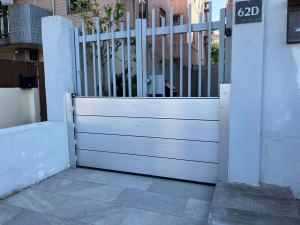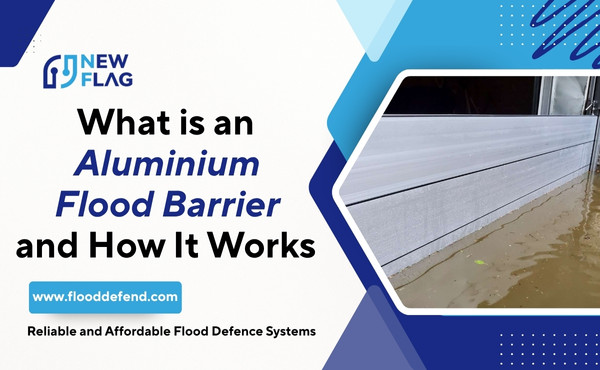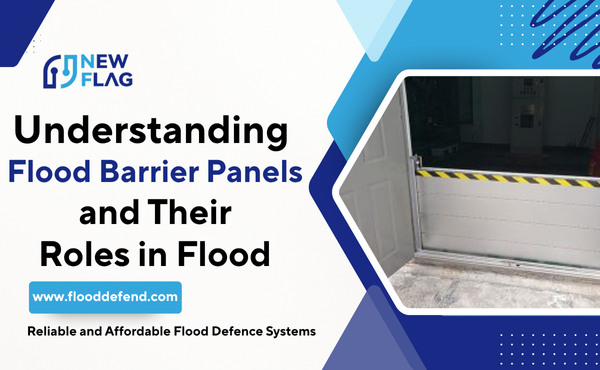Introduction
Flooding creates heavy losses for commercial buildings, industrial facilities, and public infrastructure. Many sites rely on temporary sandbags or concrete blocks, but these solutions are slow to deploy and offer weak resistance against rising water. The aluminium flood barrier has become a preferred option because it provides strong protection with a lightweight and corrosion-resistant structure.
This guide explains what an aluminium flood barrier is, how it works, and why businesses use it for long-term protection. It also covers practical considerations for specifying, installing, and maintaining the system. The goal is to give engineers, facility managers, and procurement teams clear insights when evaluating this type of flood control product.

What Is an Aluminium Flood Barrier?
An aluminium flood barrier is a modular barrier system used to block rising water at doorways, windows, garage entries, loading bays, and other exposed openings. The system uses aluminium panels that slide between fixed side posts. When the panels lock into position, the barrier forms a sealed wall that prevents floodwater from entering the protected area.
The structure relies on aluminium alloy because the material is strong, lightweight, and resistant to corrosion. These characteristics help businesses deploy the system quickly while keeping long service life.
How the Barrier Blocks Rising Water
The system works by creating mechanical pressure against the side posts and floor base. Sealing strips run along the edges of each panel. When the compression mechanism tightens, the seals compress and form a watertight fit. This prevents water from leaking through gaps that would normally appear where the panels meet or where the panels meet the wall structure.
Key Components in the System
A standard aluminium flood barrier includes:
-
Aluminium panels with interlocking profiles.
-
Side posts that stay fixed or can be removed after use.
-
Bottom seals that sit on the ground surface.
-
Compression locks that tighten the structure.
Each component has a clear function. The posts carry the load. The panels stop the water. The seals prevent leakage. The locking system holds everything together under pressure.
How Aluminium Flood Barriers Work
The system uses a simple mechanical process. The barrier stays in storage until a flood warning is issued or when heavy rainfall is expected. Workers move the panels to the installation site and slide them one by one into the side posts. After stacking the panels to the required height, the locking unit tightens and compresses the seals.
Interlocking Panels
Each panel has a tongue-and-groove profile. When stacked, the panels connect and create a solid wall. The design prevents bending under water pressure and spreads the load across the full width.
Sealing Strips
Rubber or EPDM seals line the panel edges. When the operator turns the locking mechanism, the seals compress and fill any micro-gaps. This increases water resistance during long flood events.
Locking Mechanism
Most systems use a manual lever or screw-type compression lock. This gives uniform pressure across the barrier and prevents movement when the water force increases.
Benefits of Aluminium Flood Barriers for Businesses
Aluminium flood barriers offer several operational and technical advantages for commercial and industrial sites.
High Strength With Lower Weight
Aluminium has a high strength-to-weight ratio. This means workers can carry and install the panels without heavy equipment. It also speeds up emergency response during sudden weather changes.
Long Service Life
Aluminium does not rust, even when exposed to water for long periods. This reduces maintenance frequency and lowers the total cost over the barrier’s lifespan.
Fast Setup and Removal
Because the barrier uses modular panels, a small team can assemble or remove it in a short time. This helps facilities respond quickly when a flood alert is issued.
Flexible Height Adjustments
The panel system allows height changes based on actual water levels. Buyers can order additional panels later if they want higher protection.
Applications Across Different Sites
The aluminium flood barrier is used in many commercial and industrial environments.
Retail and Commercial Buildings
Shop entrances, office buildings, and malls use barriers to protect inventory, electrical rooms, and floor-level entries.
Warehouses and Logistics Facilities
Loading docks and wide openings need flexible flood protection because they sit lower than the surrounding ground.
Underground Garages
Ramps and basement entries are vulnerable when rainwater moves downhill. Aluminium barriers create a strong line of defense without permanent concrete walls.
Industrial Plants and Utilities
Power stations, chemical facilities, and water treatment plants use these barriers to prevent equipment shutdowns and safety risks.
Ports, Hotels, and Public Buildings
Coastal properties and waterfront facilities use barriers to manage tidal surges and seasonal flooding.

What to Check Before Buying
Many B2B buyers look only at the barrier price, but technical selection is important. Several parameters affect the performance and reliability of an aluminium flood barrier.
Opening Width and Water Height
The wider the opening, the stronger the side posts must be. Expected flood height also decides how many panels are required. Engineers should match the design with local flood data.
Panel Strength and Thickness
Different suppliers offer barriers with varying wall thickness and reinforcement structures. Thicker panels resist higher pressure but increase cost. Buyers should request load test data.
Surface Preparation and Installation Base
The barrier needs an even floor surface for the bottom seal to function. Some locations may require minor leveling before installation.
Frequency of Use
If the site expects frequent floods, buyers may prefer semi-permanent posts. For occasional use, removable posts provide a cleaner appearance after the event.
Storage and Handling
Although aluminium panels are lightweight, they still require organized storage racks. Proper storage keeps seals undamaged and ready for rapid deployment.
Aluminium Flood Barriers vs. Other Flood Protection Options
Different flood control systems offer varying levels of protection. Aluminium flood barriers stand out in several areas.
Compared With Steel Barriers
Steel offers high strength but is heavy and prone to corrosion. Handling steel panels requires more labor and increases installation time.
Compared With Concrete Walls
Concrete barriers provide permanent protection but limit access and change the building layout. They also require significant construction work.
Compared With Sandbags
Sandbags have low resistance to water pressure and are slow to deploy. They also create cleanup issues after each flood.
Common Issues and Practical Solutions
Even a strong barrier can perform poorly if not installed correctly. Below are the most common issues engineers report.
Leakage at the Bottom Seal
This usually happens when the ground surface has cracks or an uneven slope. A simple surface correction or a secondary seal strip often solves the problem.
Water Seeping Through Wall Gaps
This occurs when side posts are not fixed tightly to the wall structure. Proper anchoring and seal compression prevent this.
Panel Deformation During High Flood Pressure
This problem relates to low-grade material or incorrect panel thickness. Buyers should verify the barrier’s test data before purchase.
Difficult Storage or Slow Deployment
This issue occurs when panels are not stored in order. A simple labeling system and a dedicated storage rack help streamline deployment.
Best Practices for Long Service Life
Regular care improves reliability during each flood season.
Inspect the Seals
Check the rubber strips every few months. Replace them when they become brittle or cracked.
Clean Panels After Use
Remove mud and debris after each flood event to prevent seal damage.
Train Staff on Installation
A trained team can set up the barrier faster and with fewer errors. Training also ensures consistent performance across multiple events.
Keep a Deployment Checklist
A step-by-step checklist reduces mistakes during emergencies and ensures all components are in place.
FAQ
Q1: How long does an aluminium flood barrier last?
With proper maintenance, the system can last many years because aluminium resists corrosion.
Q2: Can the barrier handle strong water pressure?
Yes. The load capacity depends on the panel thickness and structural design. Buyers should request performance test results.
Q3: How fast can workers install the system?
Most teams can set up a standard doorway barrier in minutes. Larger openings take longer but still complete faster than sandbags.
Q4: Do the posts need permanent installation?
Some systems use fixed posts for frequent use. Others use removable posts for cleaner appearance.
Q5: Does the barrier require heavy tools?
No. Most systems rely on manual locks without powered equipment.
Conclusion
The aluminium flood barrier offers strong and reliable protection for commercial buildings, industrial facilities, and public sites. Its modular design, corrosion resistance, and low weight make it a practical choice for businesses that require fast deployment and long-term durability. Understanding the structure, performance requirements, and installation needs helps buyers select the right system for their site.






